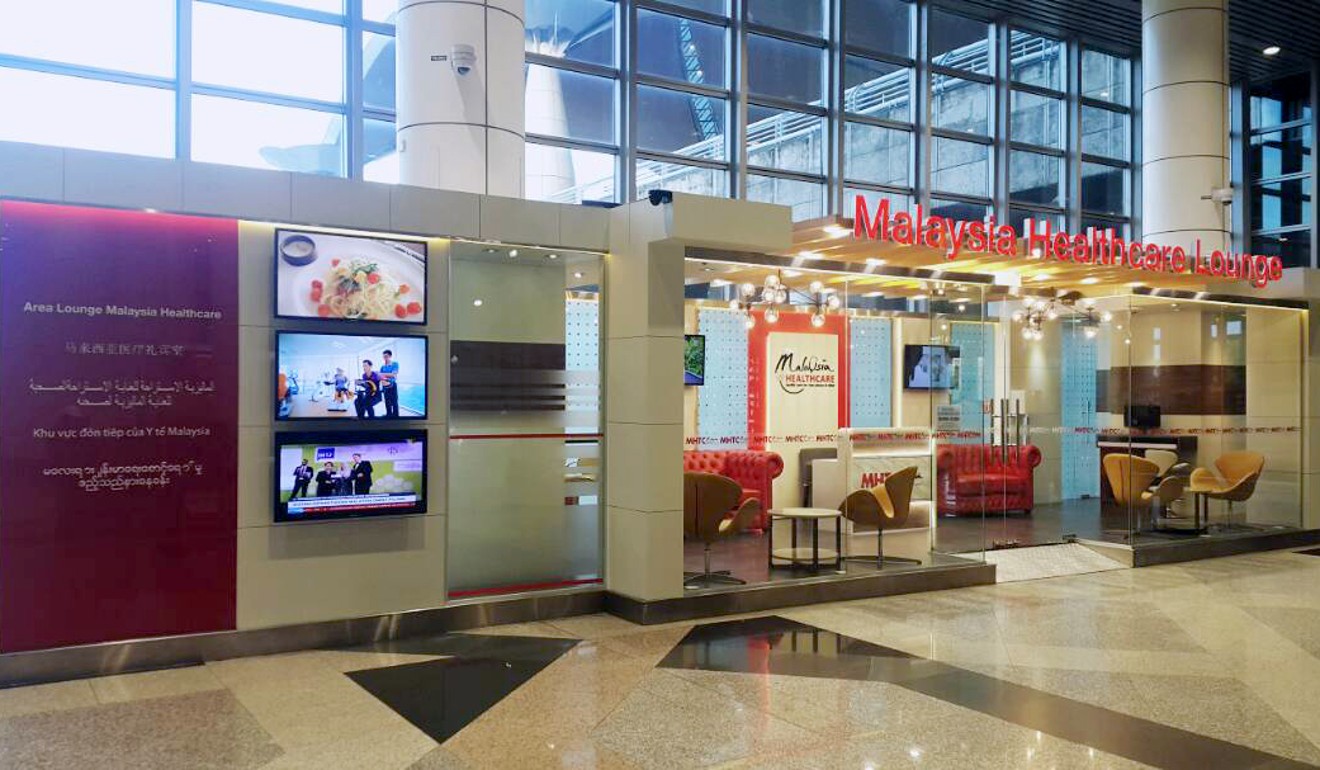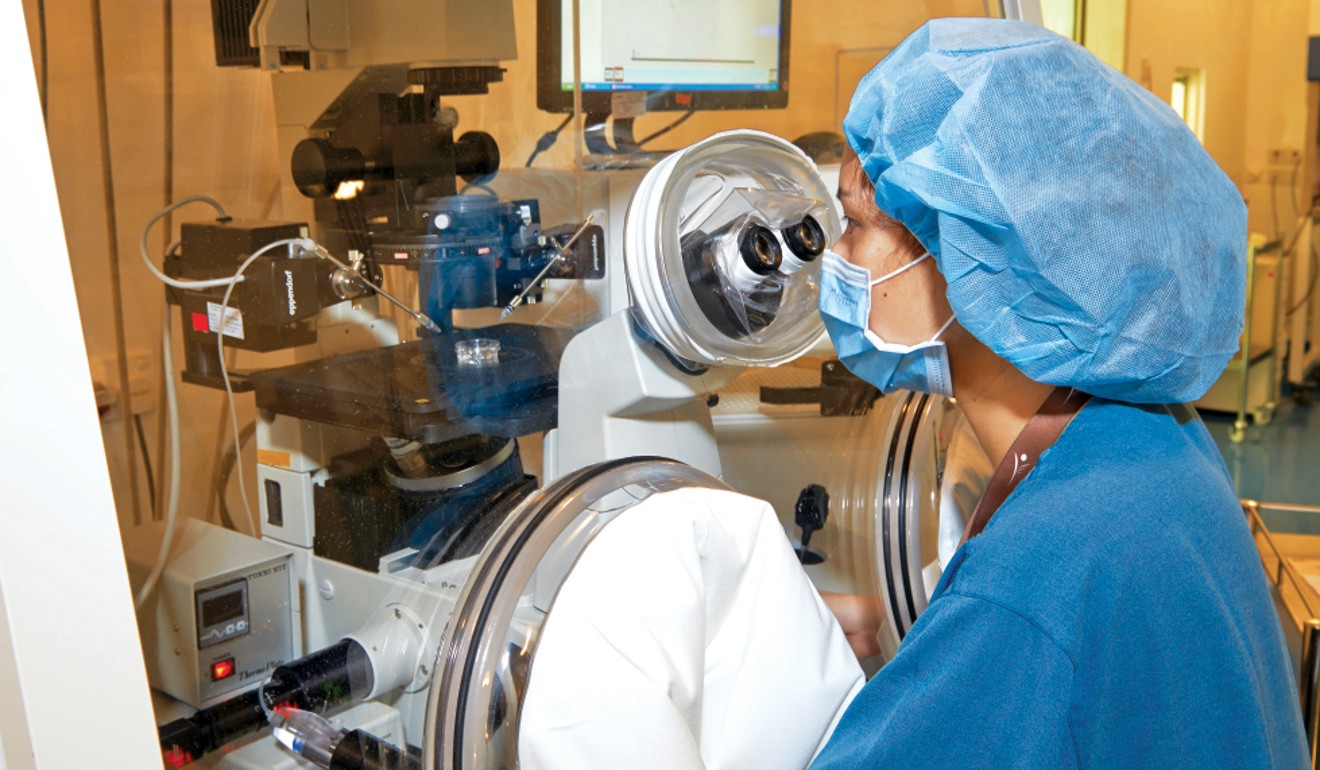
After fall of one-child policy, Malaysian fertility clinics target Chinese couples
A ‘health care travel council’ promotes Malaysia’s IVF success rate and offers to help clients throughout the treatment process
Malaysia, aiming to become a fertility hub in Asia, has stepped up efforts to target the mainland China market, hoping to lure more couples seeking to conceive.
But it is facing competition from other countries also looking to China, where an increasing number of couples need to take advantage of reproductive technology to have babies, especially after the country’s rigid one-child policy was abolished about three years ago.
Malaysia must also address the mainland public’s perception that it is not generally advanced, industry players said.
“It’s natural for us to see China as our potential market, especially after the removal of the one-child policy,” said Sherene Azli, chief executive officer of the Malaysia Healthcare Travel Council (MHTC).

She said it was estimated that about 90 million couples in China were looking to have a second child, and that 40 million of the women were older than 40 and would consider fertility treatment.
“One thing about Malaysia we are proud of is that the in vitro fertilisation (IVF) success rate is among the highest in the world,” Sherene said. “The world’s average success rate is 50 per cent, but Malaysia’s success rate is about 65 per cent on average.”
Starting this month, Chinese citizens could apply for an e-visa as a medical traveller to Malaysia, which gave them easy entry into the country, Sherene said.
The new visa allowed visitors to stay for up to 30 days and to extend that period if they could provide a doctor’s supporting document, she said.
Chinese health-care tourists are one of Malaysia’s fastest-growing markets and the MHTC has been pushing to position the country as a preferred destination for couples seeking IVF treatment.
Malaysia has budgeted 30 million ringgit (US$7.4 million) for this year to position it as a regional fertility and cardiology hub, the Kuala Lumpur-based publication The Edge Financial Daily reported.
The country is not the first to tap the Chinese market.
According to Nick Duan, president of Yiyu International IVF Service Platform in the south China city of Shenzhen, the number of mainland couples going abroad for fertility treatment had been increasing by 20 to 30 per cent annually over the past five years, to 70,000 last year.
His company introduced patients to services in Thailand, the United States, Malaysia, Taiwan, Ukraine, Russia and Cambodia, he said.
The infertility rate for Chinese couples in their childbearing years rose from 2.5-3 per cent two decades ago to 12.5-15 per cent in 2016, according to a joint study by the mainland’s health authority and China Population Association.

Since China’s first IVF-conceived baby was born in 1988, the number of hospitals licensed to carry out the procedure has grown to more than 200, though most people flock to hospitals renowned for their reproductive treatments.
At Peking University Third Hospital in Beijing, where the mainland’s first IVF baby was delivered, more than 1,000 people apply for in vitro procedures every day, China Newsweek reported.
“Patients have to wait for at least half a year in these prestigious hospitals,” Duan said. “So many rich families who don’t want to queue and don’t like the squeezed environment in domestic hospitals would choose overseas regions for fertility operations.”
Investigation reveals how scandal-hit Chinese vaccine firm cut corners
It was also common for Chinese couples to undergo the third-generation IVF surgery overseas because the latest treatment was available only to a selected group of people in China who had obtained documents proving they had gene problems, Duan said. Doctors in China usually performed second-generation IVF operations, he said.
In the third-generation technology, doctors screen embryos before implanting them in wombs, enabling couples to choose their baby’s sex.
“That’s very attractive for Chinese couples,” Duan said.
The average success rate for China’s hospitals was about 50 per cent, said Sun Xiaoxi, vice-president of the Shanghai Jiai Reproductive and Infertility Clinic Centre.

Yiyu International sent about 100 couples overseas each month, more than half to Thailand, Duan said. It started a Malaysia business several months ago.
“China is a huge market. If they choose to do it in the US or in mainland China, there is still a big market for us,” Sherene said. “We are not fighting for the same group of people. We give Chinese couples options and they decide.”
To raise the country’s profile in China, MHTC in 2016 established a partnership with Tai Orient, the biggest IVF referral company on the mainland, to provide clients with service “at every point of their journey from pre-treatment to post-treatment”, Sherene said.
About 100 mainland couples went to Malaysia for IVF treatment every month through Tai Orient, which had 30 branches in first- and second-tier cities across China, she said.

One of Yiyu’s clients is a woman identified as W whose son, an only child, died in a road accident in July 2015. The woman declined to provide more information because of privacy concerns.
To regain her “spirit support”, the woman and her husband tried to conceive through IVF, but multiple attempts all failed. They contacted a Malaysian clinic with a high success rate and, after surgery, the woman became pregnant with a baby boy in June.
Sherene said her country’s high success rate was a result of doctors’ experience and training from top medical institutions in Malaysia, Britain, Australia and the US.
China stem-cell conference offers a peek at future lifesavers
Many medical staff members in Malaysia spoke Mandarin, Cantonese or Hokkien, while one cycle of IVF treatment in Malaysia cost about US$5,000, much more affordable than other countries, she said.
A similar operation in mainland cities costs about 40,000 yuan, and in the US it is the equivalent of at least 150,000 yuan.
Although Malaysia has tried to raise awareness in China about its fertility procedures, the results have not been entirely effective.
Yu Maotao, assistant to the Tai Orient chairman, said many mainland couples still were not familiar with Malaysia’s health care sector.
“Their first impression is that Malaysia’s economic development is not good,” he said.
“They ask us: since their economy is not as strong as China, how’s it possible that they are doing better in IVF? We explain the advantage of Malaysia, by showing statistics of high success rate.
“Besides, Malaysia is near China, and its IVF operation cost is cheaper than Thailand,” he said.
“Our clients will also do their own research on the internet.”
Meet the Chinese mums paying US$11,000 for a month of luxury with their newborns
Tiffany Xiong, a 37-year-old senior manager at a foreign manufacturer in Shanghai, said she was not aware that Malaysia was a destination for cutting-edge IVF procedures. She was not interested in going there for treatment as her “overall impression for the country is that it is not advanced”, she said.
Xiong and her husband were married in 2010, and six years later she flew to Houston, Texas, where her husband was working at the time, to undergo an IVF procedure. But she failed to become pregnant from that cycle.
“I am considering doing it in Shanghai or in the US again or in Japan,” she said. “But definitely not Malaysia.”


